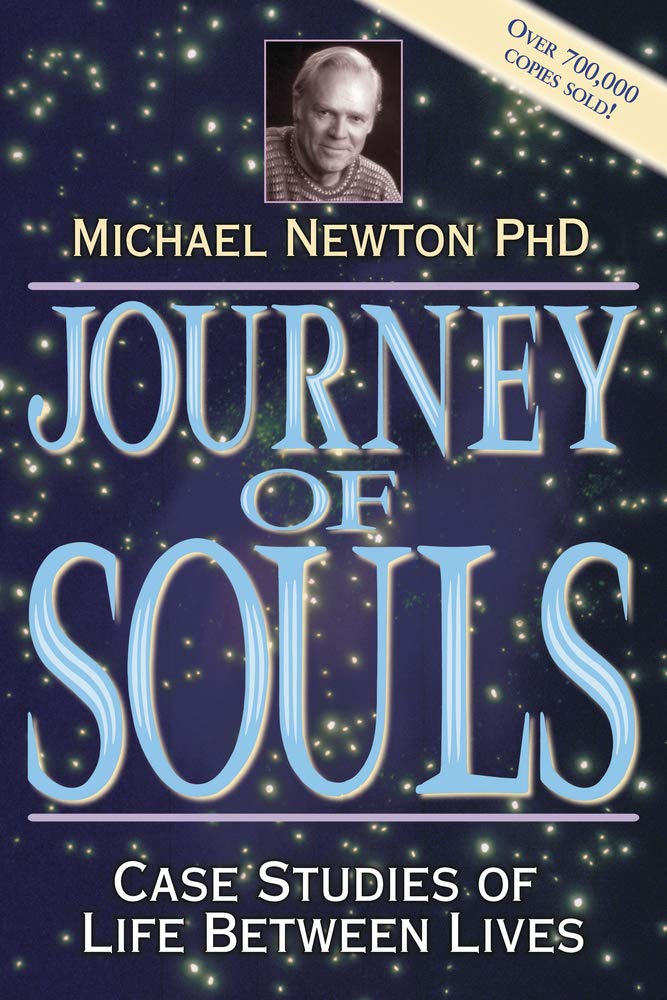Ever wonder about a life beyond this one?
Perhaps Covid-19 has made many of us reflect about our mortality, and wonder if this increasingly strange world is a preparation for something else. I have long believed that our soul exists before and after a human lifetime, and this book offers evidence I find persuasive.
Michael Newton is an American hypnotherapist, who started out sceptical about lives beyond this one. However, he discovered a talent for helping his clients use regression to travel back through their soul’s journey before this lifetime. Several hundred clients, independently, over a thirty-year period, described similar experiences, which he sums up in this book.
For me, this is as close to objective validation of something unearthly as you’ll find. And much of what he reports makes intuitive sense, has echoes in my exploration of my own soul’s journey, and tallies with accounts of near-death experiences.
Newton reports that most souls’ journey through human incarnations spans hundreds of years, and the gap between each lifetime can be tens of years or more. Much of his book describes what happens in the Life between Lives (LBL) periods, when souls return to the ‘soul cluster groups’ which are their real home and core support and learning group.
A cluster group typically has about 15 souls, and is like a study group, with a shared focus, and souls at a similar developmental stage. These groups share a senior or master guide, who has this role right through a soul’s journey. Individual souls usually have a junior or trainee guide also. Newton’s clients describe their joy at returning to this cluster, which is the soul’s true home community.
Some guides are in a human body themselves, and often a few souls in a cluster will choose related incarnations. So if you feel a deep rapport with a few people among your friends and family, it may be an ongoing soul connection.
The book describes in detail the stages a soul goes through from the end of one human life to the start of the next. These include a review of the recent life with a Council of Elders, supported by one’s guide. There is also healing and support for souls who have suffered or feel they failed in their life’s mission. Especially interesting is the process of choosing a new incarnation: key scenes are shown on a video screen, and an intention discussed with the guide.
Newton quotes case studies which help us understand how a soul might choose a life involving injury, disability, or premature death: “to overcome a body impediment does accelerate advancement.” Part of the choice process can be negotiating with other souls in your cluster to play key roles for each other, such as sibling.
His clients report that being born is a greater shock than dying. The soul does not join the body at conception, but during pregnancy, and has to align with the baby’s brain. While most of us may feel little connection to our souls, I have found that it can be cultivated, and this book suggests that we can get help from our guides and our cluster group during our human journeys. He emphasises that a soul doesn’t control the life it enters: the brain, body and personality all have a big influence.
Newton describes souls as Beginner, Intermediate or Advanced, and says “souls end their incarnations on Earth when they reach full maturity.” Newton’s analysis suggests that the vast majority of souls on Earth are Beginner souls: these only join a learning cluster around their fifth human lifetime. Intermediate souls are given trial assignments of helping guide a younger soul.
He says the mark of an Advanced soul is “one who has patience with society and shows extraordinary coping skills… [plus] exceptional insight. They may choose to keep returning to Earth, much like bodhisattvas.”
The book offers interesting perspectives on why souls choose a human life on Earth: it describes how souls may incarnate on other planets, and this one is seen as a severe challenge. An Advanced soul said: “there is so much fear to overcome here. It is a world in conflict… [but] for all Earth’s quarrelling and cruelty, there is passion and bravery here.”
If this sounds of interest, I strongly recommend you to read the book, which gives a much fuller account than I can here, with case studies and quotes from some of the souls involved. Newton has trained other therapists in his methods, and has written follow-up books: you can see more at www.newtoninstitute.org.
I value his affirming that our souls are on a growth journey, and that the challenges of human life have been chosen to enable this. This book has enriched my understanding of the soul’s journey, and has expanded my exploration of it.

